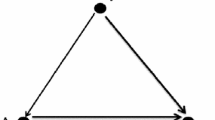Abstract
We present two stochastic models that describe the relationship between biomarker process values at random time points, event times, and a vector of covariates. In both models the biomarker processes are degradation processes that represent the decay of systems over time. In the first model the biomarker process is a Wiener process whose drift is a function of the covariate vector. In the second model the biomarker process is taken to be the difference between a stationary Gaussian process and a time drift whose drift parameter is a function of the covariates. For both models we present statistical methods for estimation of the regression coefficients. The first model is useful for predicting the residual time from study entry to the time a critical boundary is reached while the second model is useful for predicting the latency time from the infection until the time the presence of the infection is detected. We present our methods principally in the context of conducting inference in a population of HIV infected individuals.
Similar content being viewed by others
References
S. M. Berman, “A Stochastic Model for the Distribution of HIV Latency Time Based on T4 Counts,”Biometrika vol. 77 pp. 733–741, 1990.
S. M. Berman, “Perturbation of Normal Random Vectors by Nonnormal Translations, and an Application to HIV Latency Time Distributions,”Annals of Applied Probability, vol. 4 pp. 968–980, 1994.
L. M. Calzavara, R. A. Coates, J. M. Raboud, et al, “Ongoing high-risk sexual behaviors in relation recreational drug use in sexual encounters: Analysis of 5 years of data from the Toronto Sexual Contact Study,”Ann. Epidemiol. vol. 3 pp. 272–280, 1993.
CDC, Revision of the HIV classification system and the AIDS surveillance definition. Center for Disease Control and Prevention (Atlanta), 1993.
R. S. Chhikara and L. Folks,The Inverse Gaussian Distribution. Theory, Methdology and Applications, Marcel Dekker: New York, 1989.
P. D. Cleary, E. Singer, et al, “Sociodemographic and behavioural characteristics of HIV antibody-positive blood donors,”American Journal of Public Health vol. 78 pp. 953–957, 1988.
W. S. Cleveland and S. J. Devlin, ‘Locally weighted regression: An approach to regression analysis by local fitting,”Journal of the American Statistical Association vol. 83 pp. 596–610, 1988.
K. A. Doksum and A. Hóyland, “Models for Variable-Stress Accelerated Life Testing Experiments Based on Wiener Processes and the Inverse Gaussian Distribution,”Technometrics vol. 34 pp. 74–82, 1992.
J. Fan, “Locally linear regression smoothers and their minimax efficiencies,”Annals of Statistics vol. 21 pp. 196–216, 1993.
N. P. Jewell and J. D. Kalbfleisch, “Marker models in survival analysis and applications to issues associated with AIDS,” InAIDS Epidemiology: Methodological Issues (N. P. Jewell, K. Dietz, and V. T. Farewell, eds.), Birkhäuser: Boston, 1992, pp. 211–230.
J. P. Jewell, K. Dietz, and V. T. Farwell,AIDS Epidemiology: Methodological Issues, Birkhäuser: Boston, 1992.
R. A. Kaslow, D. G. Ostrow, R. Detels, et al, “The Multicenter AIDS Cohort Study: rationale, organization, and selected characteristics of the participants’,American Journal of Epidemiology vol. 126 pp. 310–318, 1987.
M. Lefkopoulou and M. Zelen, “Intermediate clinical events, surrogate markers and survival,”Proceedings of the 1994 Conference on Lifetime Data Models in Reliability and Survival Analysis, in press, 1995.
J. S. Montaner, J. Singer, M. T. Schechter, et al, “Clinical correlates of in vitro HIV-1 resistance of zidovudine. Results of the Multicenter Canadian AZT Trial,”AIDS vol. 7 pp. 189–196, 1993.
S. L. Normand and K. A. Doksum, ‘Nonparametric calibration methods for longitudinal data,” Technical Report #HCP-1994-3, Department of Health Care Policy, Harvard Medical School, Boston, MA, 1994.
D. Ruppert and M. P. Wand, “Multivariate locally weighted least squares regression,”Annals of Statistics vol. 22, to appear, 1994.
W. Winkelstein Jr, D. M. Lyman, N. Padian, R. Grant, M. Samuel, R. E. Anderson, W. Lang, J. Riggs, and J. A. Levy, “Sexual practices and risk of infection by the human immunodeficiency virus,”Journal of the American Medical Association vol. 257 pp. 321–325, 1987.
Author information
Authors and Affiliations
Rights and permissions
About this article
Cite this article
Doksum, K.A., Normand, SL.T. Gaussian models for degradation processes-part I: Methods for the analysis of biomarker data. Lifetime Data Anal 1, 131–144 (1995). https://doi.org/10.1007/BF00985763
Received:
Accepted:
Issue Date:
DOI: https://doi.org/10.1007/BF00985763




